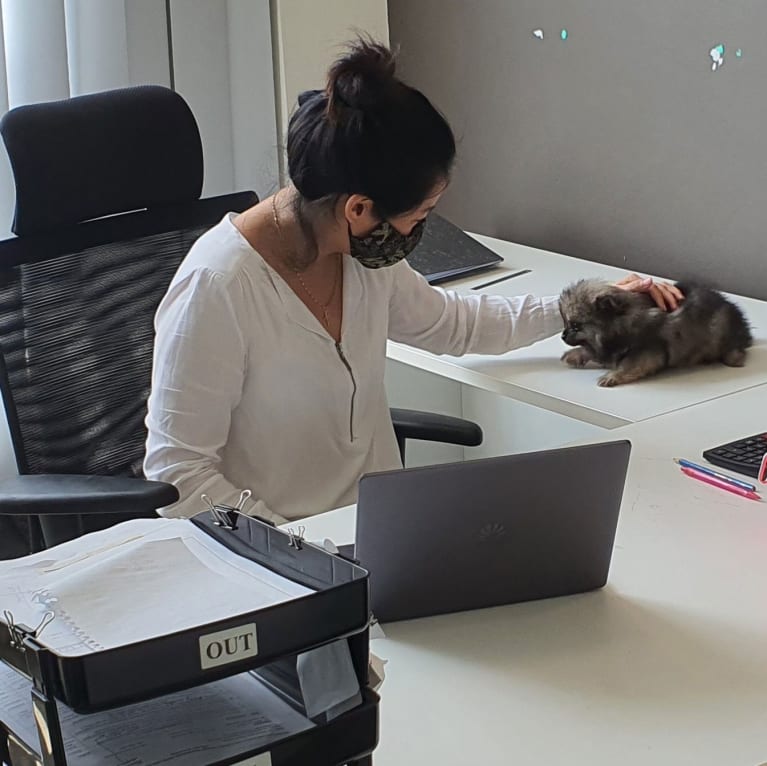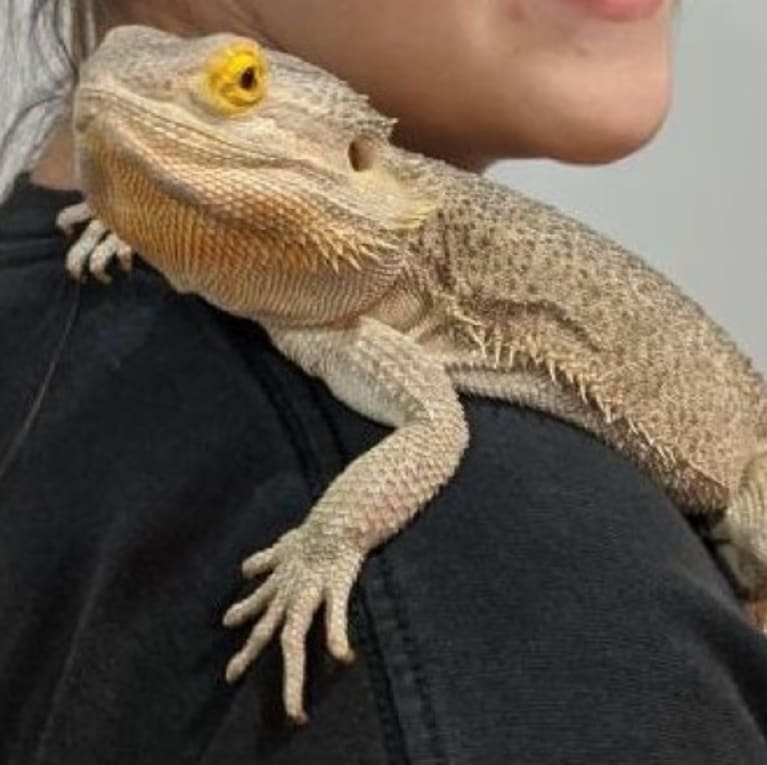Employers are starting to put their return-to-the-workplace plans into action, but does that mean pet owners no longer will have their faithful dog curled at their feet, or a purring kitten draped across their desk? After more than a year of round-the-clock COVID-19-induced togetherness, workers may miss their furry friends and worry their animal pals will suffer separation anxiety.
Pet adoption and fostering rates have been on the rise throughout the pandemic, with an estimated 3 million pets joining households in the last year, according to pet retailer Petco. Making room for Rover at work is a fetching idea.
"The past year of quarantining and working from home has brought more pets into American families than ever before and significantly deepened the bonds we share with them," said Ron Coughlin, Petco's chairman and chief executive officer.
Petco conducted a survey with 2,000 pet owners in April and found that:
- 65 percent who cannot bring their pets to work worry about their pet's separation anxiety.
- 62 percent said they have a more positive attitude toward companies that allow pets at work.
- 44 percent want their employers to adopt a pet-friendly workplace, and 41 percent would consider switching jobs if it meant they could bring their pet to work.
"In a hybrid work model, it may be easier for some employers to make a slow, steady transition to becoming pet-friendly. This will afford companies more time to ease into the process and give employees the peace-of-mind that the pets they've grown so close with throughout the pandemic won't be left behind."
There can be certain negative consequences, though, pointed out Bryan Stoddard, director of the Homewares Insider website in Teterboro, N.J. Dogs, for example, may disturb other employees or clients. Some people may have a fear of dogs or are allergic to pet dander.
Still, employers get satisfied, relaxed workers willing to work overtime when pets are allowed in the workplace, Stoddard noted.
"Of course, for this practice to work," he added, "it is necessary to set rules that employees must follow."
Bringing pets to work at Animalso is new ever since workers have started returning to the workplace, said Rachel Cassidy, veterinarian consultant at the website on pet care, "because it's almost cruel to ditch your pets after they've gotten used to your presence 24 hours a day. 
"As long as we clean up after our pets and they aren't a nuisance to anyone, our pets are allowed to continue coming to the office."
Animalso staff members may anonymously report misbehaviors; a pet is banned for a month if it receives more than three negative reports.
Employees at The Critter Depot have always been allowed to bring their pets to work, according to Jeff Neal, owner of the online drop-shipping company in Lancaster, Pa. It fulfills orders to cricket suppliers for pet stores and individual customers.
"We are a pet-focused company and feel that an employee who is well-bonded to their pet can provide greater service to our customers," many of whom own bearded dragons, leopard geckos, pixie frogs and similar animals. 
"If our employees understand the nuances of being pet parents themselves, then they can provide greater care and resources for our customers. This does pose some requirements, however," Neal said.
"The employee's pet cannot be a distraction for the day's tasks. First and foremost, we must fulfill orders and raise crickets. So a new puppy would provide too much energy into the workspace. But an older dog or small pet are more than welcome to join the fun, as long as the employee can maintain their productivity."
Johnna Devereaux, owner and director of nutrition and wellness at Bow Wow Labs in Novato, Calif., noted that employees must be responsible for their pets.
"Don't expect your co-workers to help you manage your pet," she said. Owners are 100 percent responsible for feeding, walking, disciplining and rewarding their dogs and making sure they get bathroom breaks, she emphasized. "Remember, bringing your dog to work should not make it harder for other people—or you—to do your job, so keep this in mind during your workday and be considerate."
Also, don't assume co-workers will pet-proof their areas, she pointed out, and walk through the workplace to identify any potential hazards. It's a good idea, too, for those bringing their dogs to work to take them on a quick tour of the office before settling in for the day.
"Introductions to other people can help you get a sense of who your dog is attracted to—or not," Devereaux said. "Always offer treats to your dog for successful introductions" that include no barking or jumping. "If there are other dogs in the office, it's best to introduce them on neutral territory, such as a foyer, courtyard or outdoor space. Walking together is a great way to introduce new dogs."
Various resources are available to employers considering opening their doors to employees' pets. Nestlé Purina Petcare offers an employer toolkit that includes a checklist, an authorization form, etiquette guidelines and office signs. Petco is releasing a playbook this summer with a step-by-step approach for implementing a pet-friendly environment, including do-it-yourself solutions. It also offers the following suggestions to employers:
'Wipe Your Paws'
- Designate pet-free zones for employees who have allergies.
- Employees who work in shared spaces should get their colleagues' (not collies') OK before bringing in pets.
- Ensure there are readily accessible outdoor areas for pet breaks, and establish indoor and outdoor spaces in which pets are allowed.
- Require pets to be current on their vaccinations, leashed, spayed or neutered, and free of external parasites such as fleas and ticks.
- Make it clear that pet owners are responsible for their pet at all times, including any damage they may cause to company property, and that pets should be supervised at all times.
- Consider investing in built-in or removable gates to safely contain pets at their owners' workstations.
- Clear pet-accessible areas of any potentially dangerous items such as cords, human food and items that can be knocked over, such as electronics.
- Keep toys and treats and anything else pets may not want to share away from common areas.
- Provide pet clean-up stations stocked with deodorizing wipes and stain eliminator spray for accidents around the office.
- Have an action plan for incorporating pets into emergency and office-evacuation plans.
An organization run by AI is not a futuristic concept. Such technology is already a part of many workplaces and will continue to shape the labor market and HR. Here's how employers and employees can successfully manage generative AI and other AI-powered systems.




